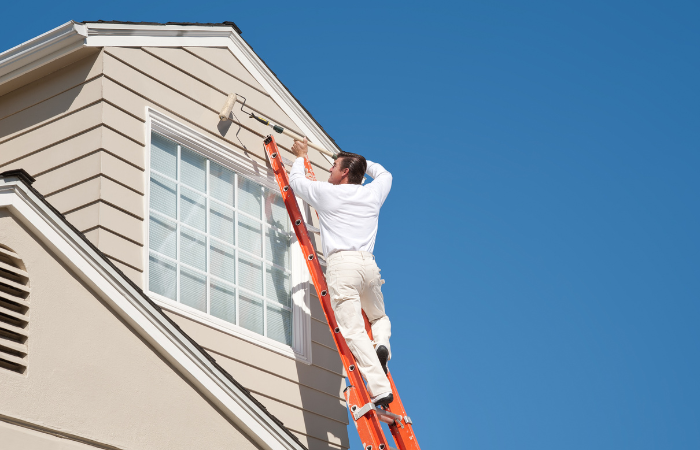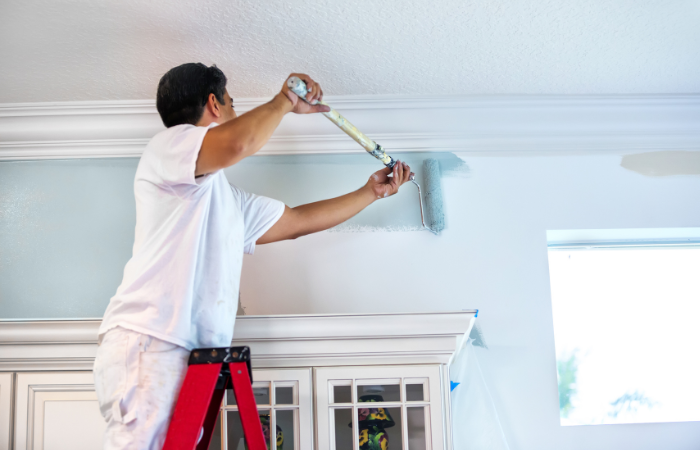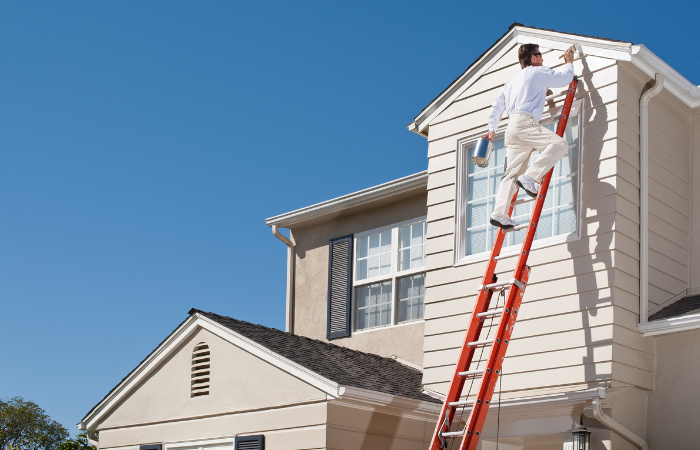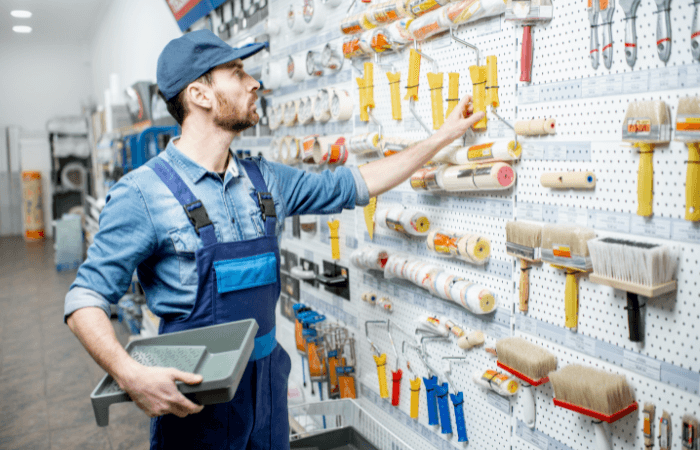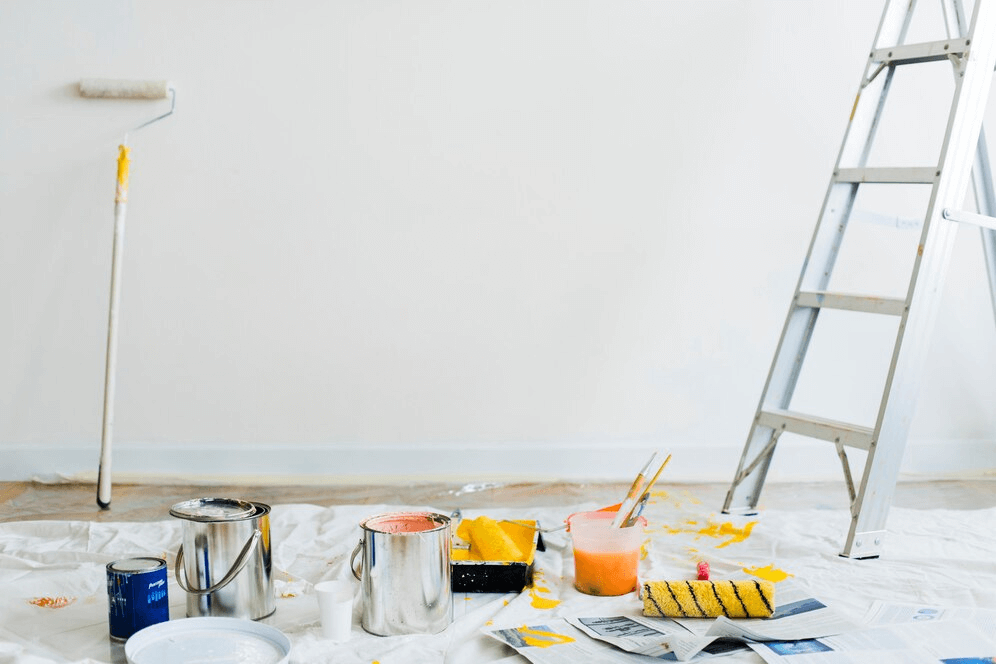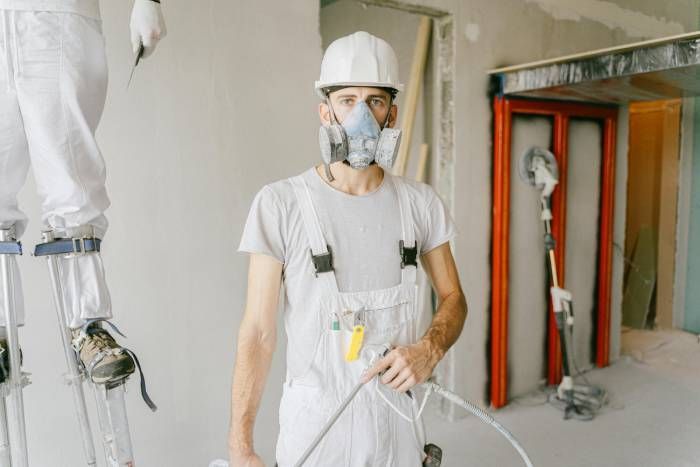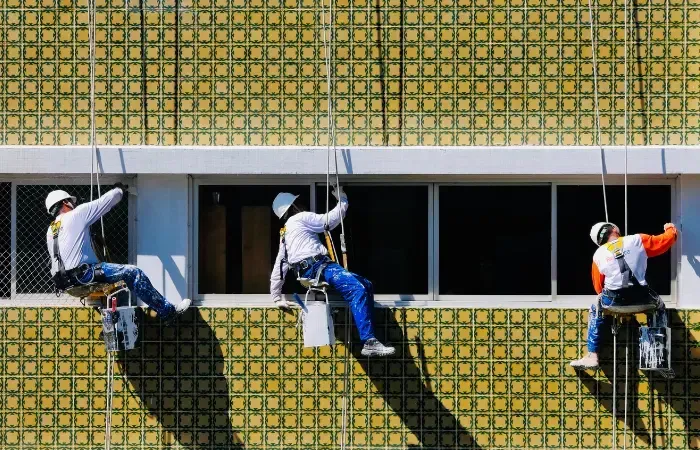Need Window Cleaning, Power Washing & Gutter Cleaning?
We do that too! Check out J&S Clean Pros:
Transforming Spaces with Interior and Exterior Paint
An interior and exterior paint job is more than just a change of color; it's a transformative process that breathes new life into every corner of your space. Whether it's refreshing the walls of your living room or revitalizing the exterior facade of your home, the power of paint is undeniable.
This comprehensive guide dives into the essential roles that color plays in design, provides valuable painting tips and techniques, and answers frequently asked questions to help you navigate the journey of selecting and applying the perfect shades for your space.
The Importance of Color in Interior and Exterior Design
Color plays a crucial role in interior and exterior design, shaping mood, influencing space perception, and enhancing aesthetic appeal. It transforms small rooms into spacious environments and dark areas into bright spaces, setting the desired atmosphere. For exteriors, color choice impacts curb appeal and highlights architectural details, integrating the structure within its surroundings. Selecting the appropriate colors reflects personal style, supports branding, and promotes well-being, ultimately elevating the overall design and experience of a space.
Painting Techniques and Tips for Interior and Exterior
Painting both the interior and exterior of your home can greatly enhance its appearance and value. However, the techniques and tips for each can vary due to different conditions and requirements. Here are some essential techniques and tips for painting both spaces effectively.
Exterior Painting:
Preparation
Proper preparation is essential for a long-lasting exterior paint job. Start by power washing to clear dirt and grime, ensuring the surface is clean. Then, scrape off old, peeling, or chipped paint and sand the area to create a smooth surface. Repair any surface damage, such as cracks and holes, to prevent water infiltration and ensure an even paint application.
Priming
Applying a quality exterior primer is crucial for enhancing paint adhesion and ensuring uniform color coverage. Primer seals the surface, preventing moisture from seeping through and paint from peeling. Apply primer, especially on bare wood and areas that have been repaired. This step also blocks stains and improves the lifespan of the topcoat.
Choosing the Right Paint
Select a high-quality exterior paint suitable for the material you're painting (wood, metal, stucco, etc.). Consider your local climate and choose paint formulated to withstand your weather conditions. High-quality paints with warranties can protect against fading, chalking, cracking, and peeling, ultimately saving time and money in long-term maintenance.
Brush and Roller Technique
Use a brush for detailed areas and edges and a roller for large, flat surfaces. When using a roller, start with a 'W' pattern, then fill it in, keeping the roller on the surface for consistent texture and coverage. This technique helps avoid streaks and ensures a uniform coat.
Weather Conditions
Paint in optimal weather conditions - dry and mild temperatures. Avoid painting in direct sunlight or when bad weather is expected within 24 hours. Extreme temperatures can affect paint adhesion and drying time, while wind can carry dust and debris onto the wet surface.
Safety
Prioritize safety by using ladders correctly and wearing protective equipment such as gloves, safety glasses, and masks, especially during prep work like sanding and scraping. Ensure ladders are stable and at the correct angle and never overreach. Safety measures prevent accidents and health issues from dust and chemicals.
Interior Painting:
Preparation
Interior painting requires thorough preparation for a flawless finish. Clean walls to remove dust and oils and fill any holes or breaks with spackling paste. Sand smooth for an even surface. Apply painter's tape to edges and trims to protect them from paint spills and ensure straight lines.
Primer
Interior primer is essential for a smooth, even finish and strong paint adhesion. It is particularly important when changing wall colors significantly or covering dark shades. Primer also prevents stains from bleeding through and can reduce the number of topcoat layers needed.
Paint Selection
Choose the correct type of paint for each room, considering the environment and usage. Bathrooms and kitchens benefit from moisture-resistant paints, while living areas may vary in sheen based on personal preference and wall condition. Matte finishes hide wall imperfections, whereas glossier finishes are easier to clean.
Cutting In
"Cutting in" is the technique of painting edges, corners, and near trim with a brush before using a roller. This method allows for cleaner, more precise lines and helps prevent roller marks along the edges. Take your time with this step for professional-looking results.
Rolling Technique
Apply paint using a roller in a 'W' or 'N' pattern to avoid saturation in one area. Then, without lifting the roller, fill in the mark. This method promotes even coverage and minimizes lap marks, ensuring a consistent finish across the wall.
Ventilation
Proper ventilation is critical when painting indoors to expedite drying time and reduce the inhalation of fumes. Open windows and utilize fans to circulate air. This not only protects your health but also helps the paint cure properly and quickly.
Clean-Up
Proper cleanup extends the life of your tools and ensures your space is neat. Wash rollers and brushes with soap and water for water-based paints or minerals for oil-based paints. Remove painter's tape before the paint is fully dry to ensure clean lines without peeling off any fresh paint.
FAQs
How often should I repaint the exterior of my home to maintain its appearance and integrity?
Repainting the exterior of your home typically depends on factors such as the type of paint used, climate, and the surface material. On average, it's advisable to repaint every 5 to 10 years. However, wood surfaces might need repainting every 3 to 7 years, while stucco can last up to 5 to 6 years. Regular inspections can help identify if a repaint is necessary, especially if there are signs of wear like fading, chipping, or cracking.
Can a professional painting service help me choose the right colors for my space?
Yes, many professional painting services offer color consultation as part of their services. They can provide expert advice on color choices that best suit your space, personal style, and the ambiance you want to create. They can also provide color samples and mock-ups to help you visualize the final look.
What is the best time of year to undertake an exterior painting project?
The best time for exterior painting depends largely on your local climate. Generally, spring to early fall is ideal, as you'll want dry, mild conditions. Temperatures between 50-85°F (10-29°C) are typically best for paint application and curing. It's also important to look at weather forecasts to avoid rain or high winds, which can affect the paint's finish.
How can I ensure that the colors I choose will look good in my space?
Before committing to a color, it's wise to test paint samples on small sections of your wall or on poster boards that you can move around the room at different times of the day. This allows you to see how varying light conditions affect the color. Additionally, using online tools or apps for virtual room painting can help you visualize the overall effect before making a final decision.
Conclusion
Transforming your spaces with interior and exterior paint is a powerful way to refresh your environment and increase the value of your property. By choosing the right colors, preparing your space properly, selecting the best paint for the job, and applying it with care, you can gain professional-quality results that will last for years to come.
Ready to start your painting project? Contact us today at J&S Paint Pros for a consultation or to schedule a professional painting service. Let us help you transform your space with the perfect paint job.



